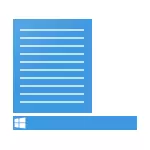
By default, the menu includes many items that can be useful - Task Manager and Device Manager, PowerShell, or the command line "Programs and Features", shutdown and others. However, if you wish, you can add your own items (or delete unnecessary) in the context menu of the Start and quick access to them. To learn how to edit menu items Win + X - in detail in this review. . See also: How to edit other context menu in Windows 10 EasyContextMenu, How to return the control panel to the context menu of Windows 10 starts.
Note: If you need to simply return PowerShell command line instead of the menu Win + X Windows in October 1703 Creators Update, it can be done in Preferences - Personalization - The taskbar - select "Replace command line PowerShell shell."
Using the free program Win + X Menu Editor
The easiest way to edit context menus of the Start button Windows 10 - use a third party freeware utility Win + X Menu Editor. She was not in Russian, but, nevertheless, it is very easy to use.
- After starting the program you will see already present in the Win + X menu items into groups, as well, as can be seen in the menu.
- By selecting any of the items and pressing the right button of the mouse, you can change its location (Move Up, Move Down), delete (Remove) or rename (Rename).
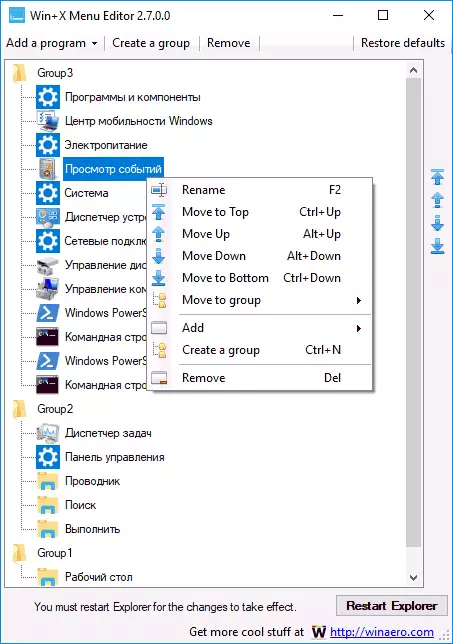
- Clicking «Create a group», you can create a new group of items in the context menu of the Start and add items to it.
- Add items you can use the Add a program button or by right-clicking the mouse menu (click «Add», will be added to the current group).
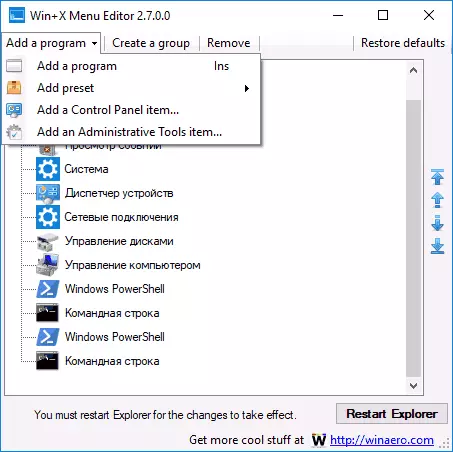
- To add an available - any program on your computer (Add a program), predefined elements (. Add a preset option Shutdown options in this case, add all at once the shutdown option), Control Panel items (Add a Control Panel Item), Windows administration tools 10 (Add an administrative tools item).
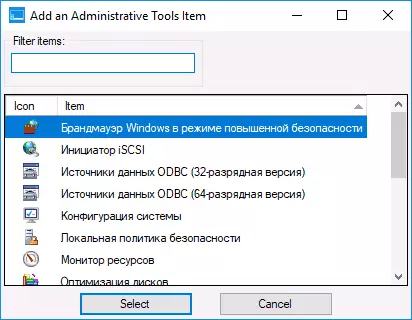
- After editing is complete, press the button «Restart explorer» to restart Explorer.
After restarting, you will see the conductor has changed the context menu of the Start button. If necessary, restore the original settings in this menu, use the Restore Defaults button in the upper right corner of the program.
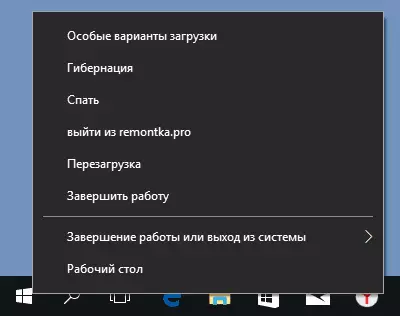
Download Win + X Menu Editor from the official developer page http://winaero.com/download.php?view.21
Changing the context menu items Start Manual
All Win + X menu labels are located in the% Localappdata% \ Microsoft \ Windows \ WINX \ folder (you can insert this path in the "Addresses" field of the conductor and press ENTER) or (which is the same) C: \ users \ user_ser_ \ APPDATA \ Local \ Microsoft \ Windows \ Winx.
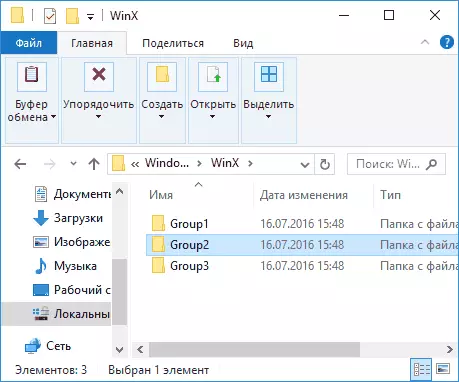
The shortcuts themselves are located in the attached folders corresponding to groups of items in the menu, the default is 3 groups, and the first is the lowest, and the third is the top.
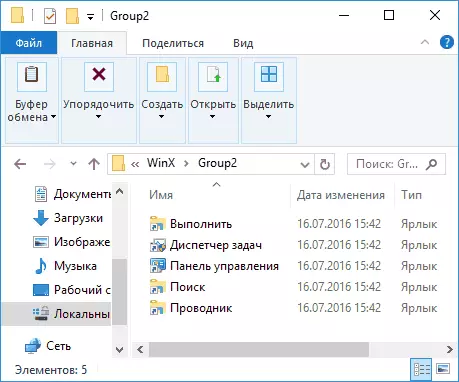
Unfortunately, if you create shortcuts manually (in any way that this system offers to do) and put in the Start Context menu folder, they will not appear in the menu itself, because only special "trusted shortcuts" is displayed.
However, the ability to change its own label requires a necessary way, for this you can use the third-party Hashlnk utility. Next - we consider the procedure for the example of adding the control panel in the Win + X menu. For other labels, the process will be the same.
- Download and unpack Hashlnk - github.com/riveraar/hashlnk/blob/master/bin/hashlnk_0.2.0.0.zip (for work requires distributed components Visual C ++ 2010 x86, which can be downloaded from the Microsoft site).
- Create your shortcut for the control panel (as an "object" you can specify Control.exe at a convenient location.
- Run the command line and enter the command path_k_hashlnk.exe path_k_lnk.lnk (best place both files in one folder and run the command line in it. If the paths contain spaces, use quotes, as in the screenshot).
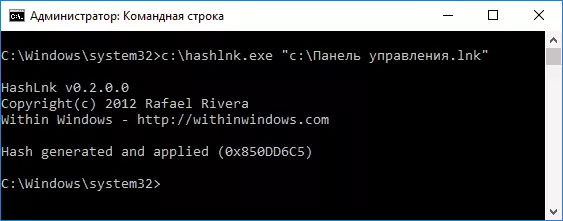
- After executing the command, your shortcut will be possible to arrange in the Win + X menu and at the same time it will appear in the context menu.
- Copy the shortcut in the% Localappdata% \ Microsoft \ Windows \ WINX \ group2 folder (this will add the control panel, but the parameters will also remain in the menu in the second group of shortcuts. You can add shortcuts and other groups.). If you want to replace "Parameters" to the "Control Panel", then delete the "Control Panel" list available in the Label folder, and rename your label to "4 - ControlPanel.lnk" (since the extension labels are not displayed, enter .lnk is not required) .
- Restart the conductor.
Similarly, with Hashlnk, you can prepare any other labels for the room in the Win + X menu.
I complete this, and if you know additional ways to change the items of the Win + X menu, I will be glad to see them in the comments.
